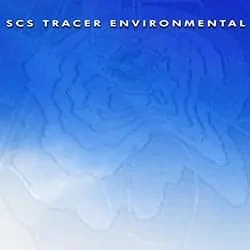

SCS Tracer, a specialty division of SCS Engineers, is the most experienced and versatile tracer science consulting team in the United States. Collectively, our tracer experts possess nearly 100 years of experience in all aspects of tracer science, including program design, custom equipment design and fabrication, numerical model development and validation, as well as SCS staff have expertise in all aspects of compiling Process Safety Management (PSM) and Risk Management Plans (RMP) documentation.
Thorough study of the transport and fate of airborne chemical vapors, particularly those with odors, has become necessary to fully understand the effects of these chemicals on human health and the environment. In circumstances where chemical species of interest 
When performing Health Risk Assessments, dominant pollutants and dominant emission sources are identified for each type of health impact evaluated. Once identified, SCS Tracer can recommend cost-effective ways to reduce the risk by strategically changing facility operations (e.g., changing coating materials, adding emission control devices, etc.).
SCS Tracer specializes in the application of tracer science to solve complex environmental problems. The use of non-toxic chemical tracers to collect information about pollutant transport and dispersion has been practiced for decades, and SCS Tracer staff have been directly involved in the development and application of this technology. We offer advanced state-of-the-art commercialized capabilities to conduct environmental diagnostic testing. All of our tracer systems are non-toxic, non-hazardous, and safe to the environment. Our capabilities allow testing in all environmental media including soil gas, water and fluids, and atmosphere.
Tracers can serve as a practical diagnostic tool for solving a wide array of complex environmental impact problems. The application of this science is most beneficial and cost-effective when modeling is just not accurate enough and/or standard measurement techniques are inappropriate or inconclusive. In fact, tracers are commonly used in conjunction with ongoing modeling or measurement programs to enhance their outcome.
The more common applications of our tracer systems include:
SCS can assist in identifying and isolating the sources of fugitive odors from operations such as solid waste facilities, composting operations, sewage treatment facilities, chemical manufacturing, and food processing, and we can design workable, cost-effective plans to mitigate your off-site odor impacts.
SCS Engineers recognizes the importance of providing environmental compliance solutions that are both cost-effective and compatible with your organization’s operational objectives. To achieve this balance, we apply in-depth technical experience, vast practical experience, and a cost-benefit analysis to develop an optimal compliance strategy for each client. Our air quality specialists work with clients to implement solutions to complex issues on schedule, within budget, and in compliance with Federal, state, and local regulations. This proven process has helped our clients stay on schedule and avoid significant unexpected operating costs.